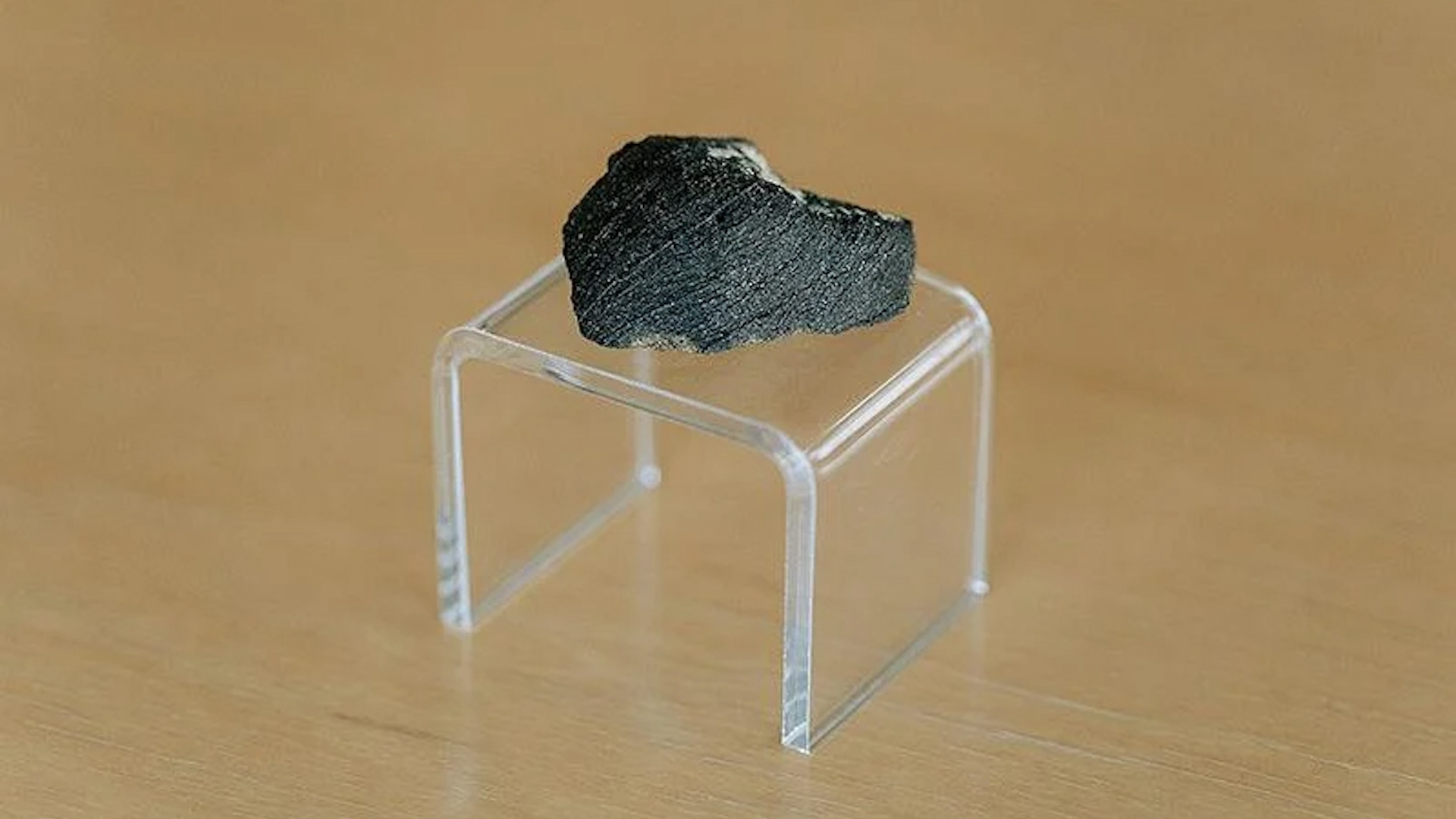Meteorite found in a drawer at university contains 700-million-year-old evidence of water on Mars
The Lafayette meteorite was discovered in a drawer at Purdue University in 1931, with no clear indication of how it got there. A new analysis of the rock reveals evidence of liquid water on Mars 742 million years ago.

A meteorite discovered in a drawer at a university in 1931 harbors evidence of liquid water on Mars 742 million years ago, new research suggests.
The Lafayette meteorite is a glassy chunk of space rock about 2 inches (5 centimeters) long. It was found at Purdue University nearly a century ago, and no one knew who discovered it or where it came from. It wasn't until the 1980s that researchers discovered that the gasses trapped inside the mysterious rock matched the Martian atmosphere as measured by NASA's Viking landers, according to Purdue University.
Researchers also learned in early studies of the meteorite that its minerals had interacted with liquid water during their formation. No one knew when those minerals had formed, though. Now, a new study, published Nov. 6 in the journal Geochemical Perspectives Letters, finds that they are less than a billion years old.
"We do not think there was abundant liquid water on the surface of Mars at this time," study lead author Marissa Tremblay, an assistant professor with the Department of Earth, Atmospheric, and Planetary Sciences at Purdue University, said in a statement. "Instead, we think the water came from the melting of nearby subsurface ice called permafrost, and that the permafrost melting was caused by magmatic activity that still occurs periodically on Mars to the present day."
Tremblay and her colleagues used variations in molecules of argon within the minerals to determine the most precise age yet for the minerals' formation. They also considered the heating that the meteorite would have experienced when it flew off of Mars after an impact 11 million years ago, as well as the possible effects of its transit through space and subsequent trip through Earth's atmosphere.
Though the meteorite's precise time of arrival on Earth isn't known, researchers reported in 2022 that trace amounts of a crop fungus on the space rock's surface, combined with unconfirmed reports that a student witnessed the meteorite land during a fishing trip, suggest that the meteorite landed in 1919.
Sign up for the Live Science daily newsletter now
Get the world’s most fascinating discoveries delivered straight to your inbox.
"The age could have been affected by the impact that ejected the Lafayette Meteorite from Mars, the heating Lafayette experienced during the 11 million years it was floating out in space, or the heating Lafayette experienced when it fell to Earth and burned up a little bit in Earth's atmosphere," Tremblay said. "But we were able to demonstrate that none of these things affected the age of aqueous alteration in Lafayette."
The confirmation of the date of the meteorite's interaction with liquid water doesn't just elucidate the past history of Mars. The same methods can also work on other meteorites found on Earth, or in samples brought back from missions to other planets, moons and asteroids.
"We have demonstrated a robust way to date alteration minerals in meteorites that can be applied to other meteorites and planetary bodies to understand when liquid water might have been present," Tremblay said.

Stephanie Pappas is a contributing writer for Live Science, covering topics ranging from geoscience to archaeology to the human brain and behavior. She was previously a senior writer for Live Science but is now a freelancer based in Denver, Colorado, and regularly contributes to Scientific American and The Monitor, the monthly magazine of the American Psychological Association. Stephanie received a bachelor's degree in psychology from the University of South Carolina and a graduate certificate in science communication from the University of California, Santa Cruz.









